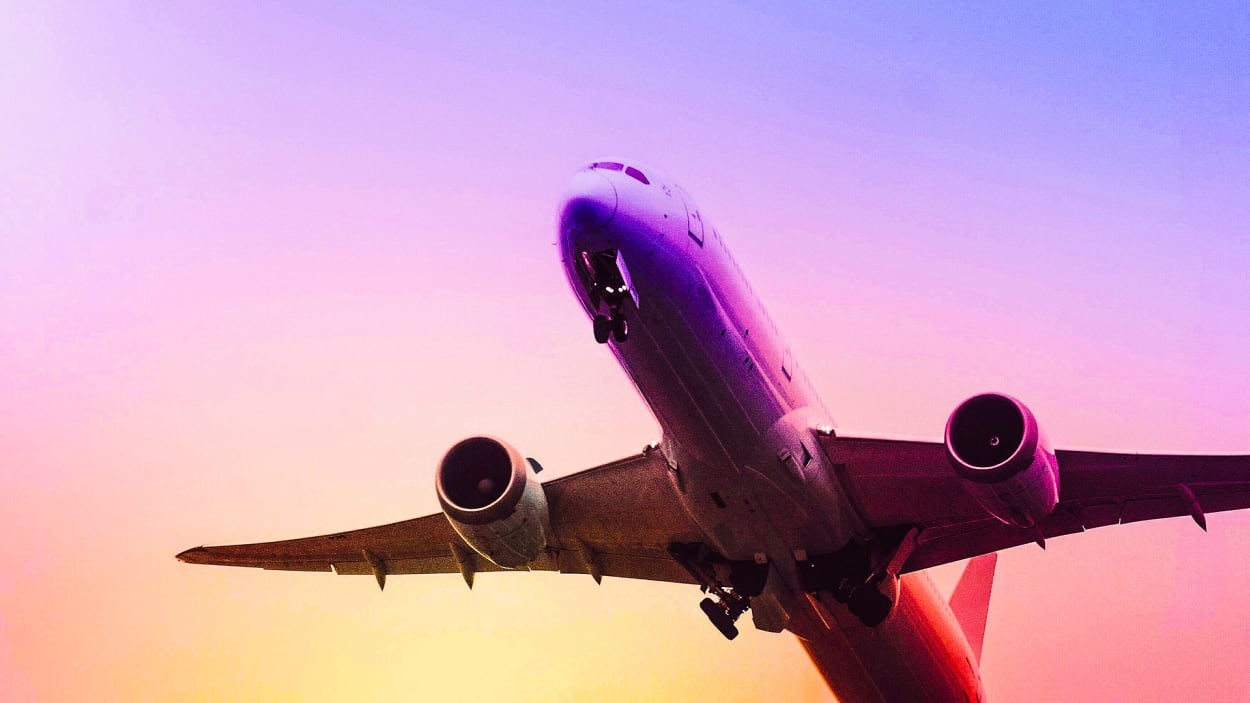Why some normal passenger flights are now flying faster than the speed of sound
By Sean Cudahy
Last week, American Airlines flight 106 took off from New York’s John F. Kennedy International Airport with plans to fly around 564 miles per hour en route to London—but it ended up going a lot faster. A couple hours into the flight, just east of Newfoundland, the Boeing 777 aircraft reached a ground speed of 778 miles per hour, according to data from flight tracking site FlightAware. That’s slightly faster than the speed of sound.
The results were pleasant for passengers. The jet touched down at Heathrow Airport 54 minutes early, and in a flight time of six hours and seven minutes. For comparison, a similarly timed flight on the same route reached just 642 mph, three days later. But that’s not to say American flight 106 was alone last week.
Last Wednesday, an Amsterdam-bound KLM jet took off from JFK two hours and 20 minutes late. But it landed at Schiphol airport just 77 minutes behind schedule, FlightAware data shows.
The aircraft made up 63 minutes inflight, helped by top speeds of 770 mph—which the KLM crew, like the American pilots, reached near Newfoundland.
Aviation watchers quickly picked up on both the trend and the forces behind the impressive flight times.
“Very strong jet stream over the Atlantic today,” Sweden-based FlightRadar24 shared on X (formerly Twitter) on October 31, tracking six flights, at one point, that had reached speeds of at least 650 knots (about 748 mph).
Stronger jet streams in winter
Certainly, pilots expect stronger jet streams this time of year. The fast-moving bands of air tend to be more pronounced in the fall and winter as the contrast between warm air from the tropics and cold Arctic air becomes more pronounced, according to the National Oceanic and Atmospheric Administration (NOAA).
But two additional factors came together last week: the record-breaking winds of Tropical Storm Ciarán, and the jet stream being conveniently located relative to the eastbound transatlantic routes many airlines fly, says Jim Foerster, chief meteorologist at the consultancy DTN, which advises major U.S. airlines, airports, and flight planning companies.
“So, they didn’t have to change their flight route. They just took advantage of an extremely strong jet stream,” Foerster says. “It was one of those things where everything was in the right place at the right time.”
Not your typical ‘supersonic’ flight
Aircraft flying the speed of sound is, of course, nothing new. Chuck Yeager first reached Mach 1 in 1947. Fighter jets like the U.S. Air Force Thunderbirds’s F-16s can fly twice the speed of sound.
Commercially, before its retirement in 2003, the Concorde carried millions of passengers between the U.S. and Europe in a mere three and a half hours thanks to top speeds in excess of 1,300 mph.
Unlike the Concorde, though, there were no supersonic “booms” behind last week’s commercial jets that registered ground speeds of 765 mph or faster.
After all, the jets themselves weren’t generating supersonic levels of propulsion. It was merely the fast-moving wind at 30,000-plus feet that carried the planes at faster-than-expected speeds.
“You’re still moving through a ‘parcel’ of air at the same speed as any flight. You’re just getting ‘pushed’ across the ground faster in the river of high moving air,” explains Kathleen Bangs, a former commercial pilot and senior marketing communications strategist at FlightAware.
Still, the strong tailwind is helpful to airlines in the face of higher fuel costs which, major U.S. carriers have each said, are proving to be a pesky (proverbial) headwind to profit margins of late.
“Earnings and cash flow have been impacted by higher fuel and maintenance costs,” Delta Air Lines CEO Ed Bastian acknowledged on the carrier’s recent third quarter earnings call.
It’s all the more reason for airlines and air traffic control personnel to strategically plan westbound routes across the Atlantic to avoid the reverse—incredibly fuel inefficient—effects of what those American and KLM jets enjoyed on the way to Europe.
That’s especially true as El Niño weather patterns, Foerster notes, figure to make a repeat of last week’s strong jet streams quite possible in the coming months. “We’ll see a lot of these [flights] this year because of this overall pattern,” he predicts.
(8)



